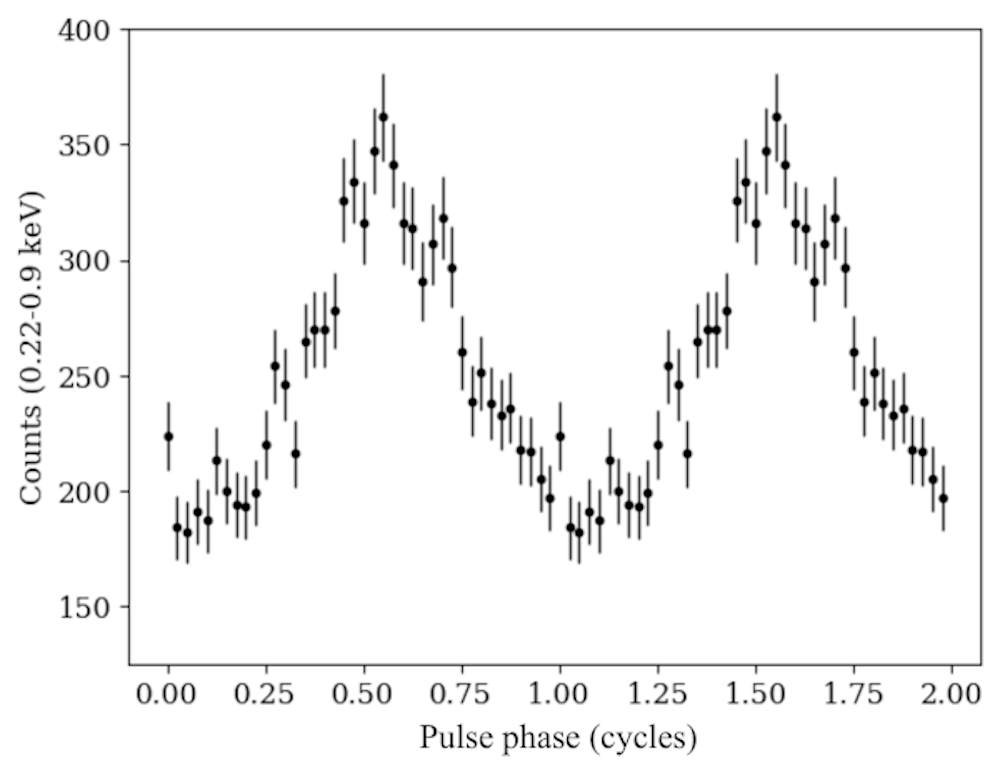NICER / ISS Science Nugget
for August 10, 2023
NICER discovers super-soft modulations in a new nova
On April 20, an Australian amateur astronomer discovered the sudden brightening of a previously unremarkable star, V1716 in the Scorpius constellation. Ground- and space-based telescopes from radio through gamma-ray wavelengths began observing this phenomenon, and their studies suggested that V1716 Sco is a "classical nova," the visible consequence of a hydrogen fusion reaction on the surface of a white dwarf star. Most such novae are known to develop soft X-ray emission within weeks of the initial eruption, as the dispersing explosive debris eventually reveals the million-degree glow of the white dwarf's surface. In response to a target-of-opportunity request -- submitted by two summer interns working with the NICER team at NASA GSFC -- NICER began observations on July 25.
NICER confirmed the detection of low-energy X-rays from V1716 Sco, and with its first observations revealed modulation of the X-ray brightness at approximately 78 seconds, within the range of periodicities typical of classical novae. Also consistent with this family of objects, the observed modulation is not strictly regular but wanders between about 75 and 80 seconds. The reasons for this unsteadiness are not entirely clear: the fundamental cyclical emission almost certainly reflects the spin of the white dwarf, with a surface hot spot rotating in and out of view, while variations may arise due to wander of the spot on the surface, or precession of the star (like a toy top), or perhaps waves of solid-body oscillations of the star. The discovery of the V1716 Sco pulsations were reported by interns M. G. Dethero (George State Univ.), E. Charles (Howard Univ.), and collaborators in Astronomer's Telegram #16167. Continued monitoring of the nova outburst, tracking its decay along with its spectroscopic and timing evolution, will enable discrimination between proposed models for classical novae.

Periodic modulation of the soft-band (below 0.9 keV photon energy) X-ray emission from V1716 Sco, discovered in early observations with NICER. Photon counts are accumulated in 40 equal-width bins spanning the 78.2-second pulsation period, and the data are plotted twice for clarity. (Credit: Dethero et al. 2023)
<< Previous
Main Index